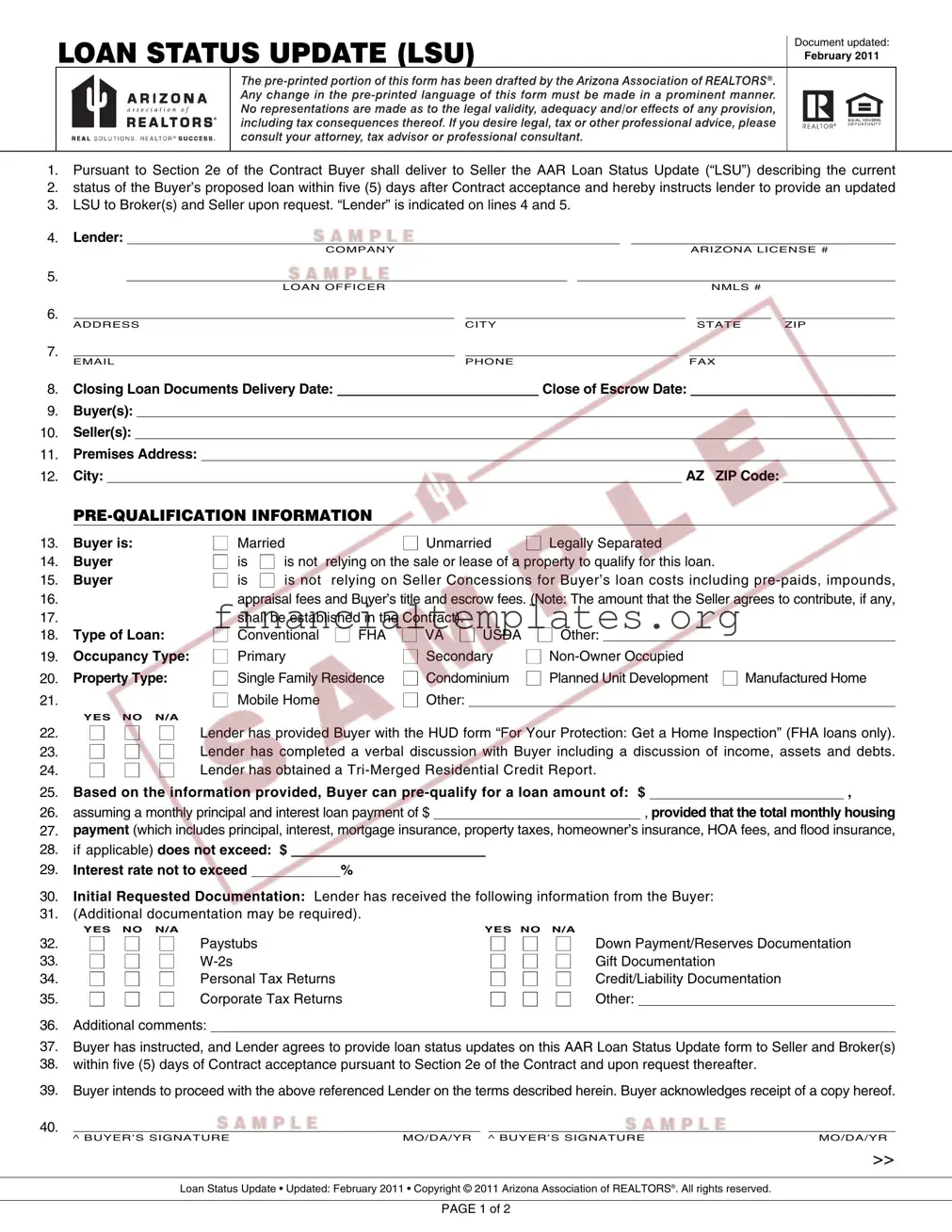The Loan Status Update (LSU) form bears a resemblance to the Loan Application (also known as Form 1003). Just as the LSU form serves to update involved parties on the current status of a buyer's loan, including pre-qualification details and loan terms, the Loan Application gathers comprehensive information about the borrower's financial status, employment history, and the property being financed. Both documents are foundational to the lending process, facilitating communication between the lender, buyer, and, in the case of the LSU, the seller and brokers, by providing detailed insights into the financial aspects of the transaction.
Similarly, the Good Faith Estimate (GFE) document shares commonalities with the LSU form. The GFE outlines the estimated costs involved in obtaining a loan for the buyer, providing an early snapshot of expected charges and loan terms. Like the LSU, it plays a pivotal role in keeping the buyer informed about the financial dimensions of their loan. While the GFE focuses predominantly on cost estimates at the early stages of the loan application process, the LSU encompasses a broader spectrum of loan progress updates, including appraisal results, interest rates, and closing document deliveries.
The Truth in Lending Disclosure (TIL) also parallels the LSU form in certain respects. This document is designed to inform borrowers about the costs of their loan, including the annual percentage rate (APR), finance charges, and the total amount financed. While the TIL provides a detailed account of the loan's financial implications for the borrower, the LSU offers a broader overview of the loan's status, including verification of documents received, approval status, and adherence to contractual timelines. Both documents serve to enhance transparency and ensure borrowers are well-informed about their financial commitments.
The Closing Disclosure (CD), mandated by the TILA-RESPA Integrated Disclosure (TRID) rules for most types of mortgage transactions, also exhibits similarities to the LSU form. The Closing Disclosure offers a final review of the loan terms, monthly payments, and closing costs, and must be provided to the borrower at least three business days before the loan closing date. The LSU, while broader in scope, similarly updates parties on the completion of necessary steps toward loan finalization, such as appraisal completion and approval conditions. Both the CD and LSU contribute to the borrower's understanding and readiness for loan acceptance and property purchase completion.


